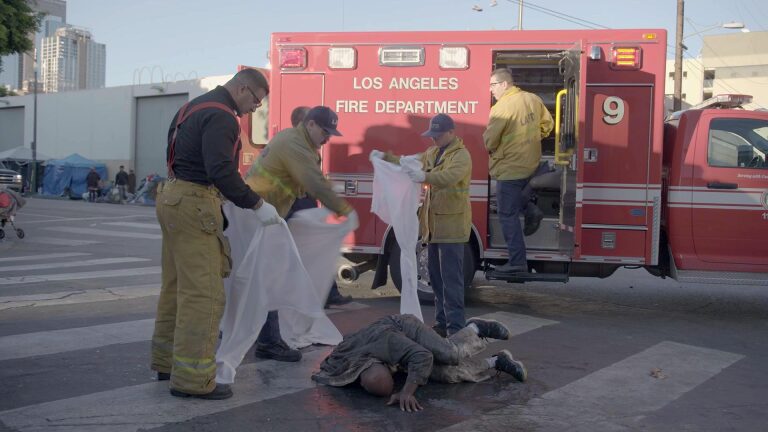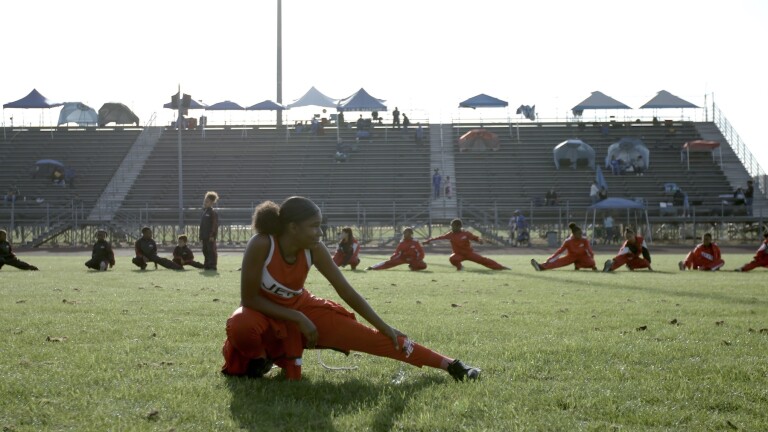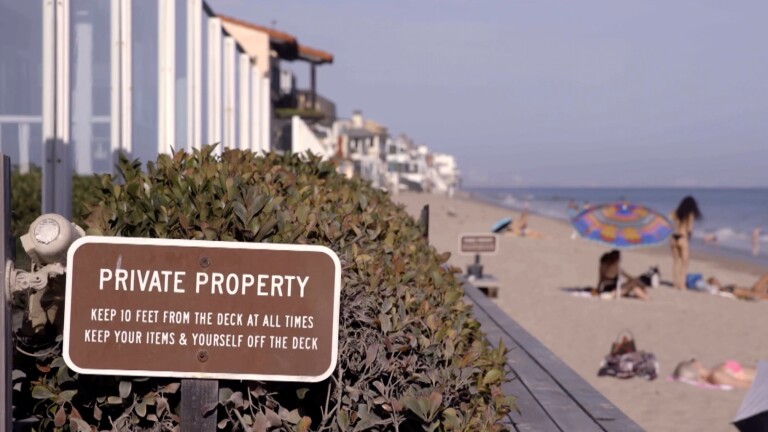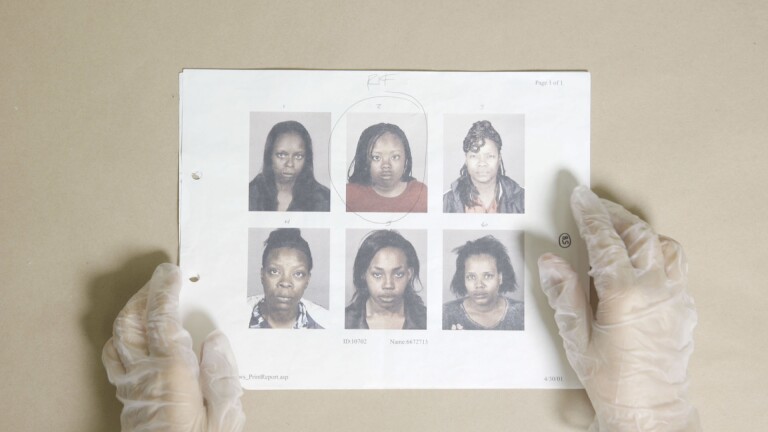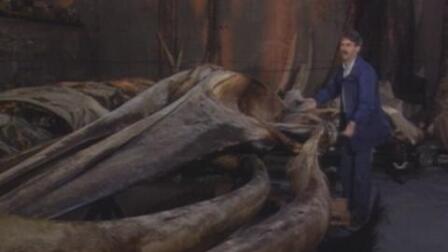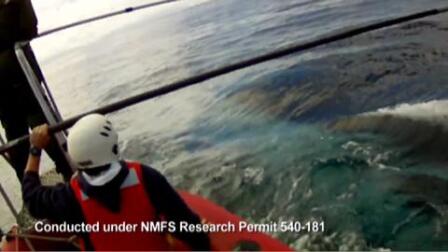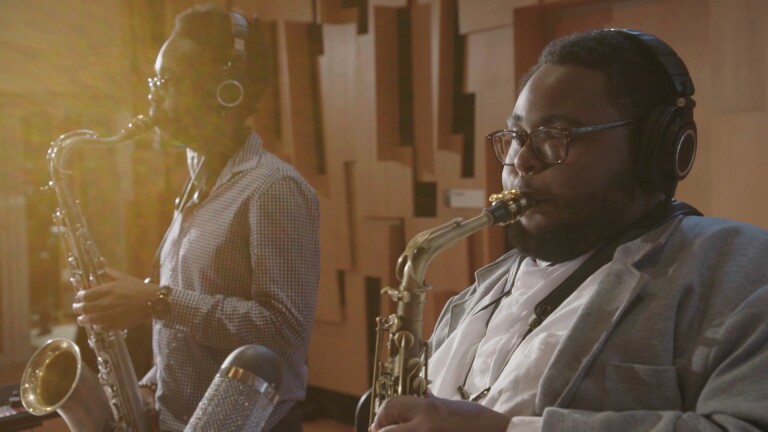
Ticket to Space
TRANSCRIPT
Val Zavala: Good evening. I'm Val Zavala. We're here at Griffith Observatory, where over the past 75 years, millions of people have come to get a better view of the stars. But now we're entering a new era, in which you can buy a ticket to space and head to the edge of the earth's atmosphere, and California is the center of this new enterprise. Tonight, Correspondent Vince Gonzales takes a look at how the private space industry is taking off.
[T minus ten, nine, eight, seven, six, five - all three engines up and burning - two, one, zero, and liftoff! The final liftoff of Atlantis. On the shoulders of the space shuttle, America will continue the dream.]
Vince Gonzales: For some, NASA's space shuttle program was indeed a dream come true. The reusable space plane became America's delivery service and astronaut bus to the international space station, a novel way to get satellites into orbit, and a way to fix them when they malfunctioned — by taking repair crews right to them, like the mission to make major repairs to the optics on the Hubble Space Telescope. Repairs that later brought us spectacular views of the universe.
Space historian Peter Westwick — curator of a new exhibit highlighting California's impact on aerospace — says, overall, the shuttle's record is mixed, but...
Peter Westwick/Aerospace Historian, The Huntington Library: So it did prove the concept of a reusable space plane, something that could fly back down, land intact after orbiting. It proved that concept. It did serve as a sort of bus, as you say, a kind of a space truck, getting cargo up to the space station, helping to build the space station, launching large payloads. And it did keep a large portion of America's aerospace industry kind of in business.
Gonzales: But that all ended when Atlantis touched down in July.
[The space shuttle pulls into port for the last time. Its voyage at an end.]
Gonzales: Also at an end, for at least the next three to ten years, is this country's guaranteed access to space.
Now, the only way astronauts can get to the space station and back, is by hitching a ride with the Russians — at about 20-million bucks a seat.
That's expensive. And it puts America's space programs at the mercy of whatever way the geo-political winds blow.
Westwick: That's the great irony of course and something nobody would have predicted 40 or 50 years ago when the space race was just getting off the ground, so to speak, and the main motivation for us was to beat the Soviets into space, into orbit, and then beat them to the moon and beat them to other planets and so on. So the great irony of course now is that we are cooperating with them.
Gonzales: Even though America's current lack of space capability worries some, NASA has no plans to replace the shuttle with another government program.
Instead, private companies are being given a chance at bat. NASA recently turned over a former shuttle hanger to aerospace giant Boeing, which is trying to develop a seven-passenger craft for trips to the space station.
Robert Cabana/Director, Kennedy Space Center: Commercial operations are vital to our future success as they keep us from being dependent on our Russian partners to deliver our crews to the space station.
Gonzales: NASA has also started working with smaller companies, including start-ups, who are betting the "new frontier" could become a source of new profits.
Alan Lindenmoyer/ Manager, NASA Commercial Crew & Cargo Program: We told the companies that we would not only be an investor in their capability, that we would become a customer of their services, and we've done that. So I believe over the next three to five years you will see these companies fulfilling their contractual requirements, routinely servicing the space station, and then moving closer to developing a human
transportation capability.
Gonzales: So, NASA is making an investment of more than 800-million taxpayer dollars and bringing decades of technical experience and guidance to private space businesses.
Lindenmoyer: This is a government-industry partnership. We are acting as a lead financial investor as well as a technical advisor to the companies. So if there's ever a case where they asked for particular assistance on a particular problem that was challenging, then we would reach back through all the resources we have available at NASA to help work thru that particular problem or challenge.
Gonzales: And there have been a lot of challenges. Several private ventures have made big promises, unveiled radical new spacecraft designs, and then flamed out when faced with the massive difficulties that come with just getting into space.
Westwick: Space is a dangerous place. Flying off the ground is a dangerous place. When you're up 100-feet off the ground, a thousand-feet off the ground, 100-miles off the ground, you are out of your element, and space is even more dangerous because we have less experience there.
Gonzales: There are companies showing promise, though. And some of them are taking the first steps into space from here "? the high desert just north of Los Angeles.
Dan DeLong/ Vice President and Chief Engineer: We're going to be selling experiment space, eventually we're going to be launching small satellites to orbit using the Lynx as first stage and carrying people the whole time.
Gonzales: The "Lynx" is a new suborbital spacecraft being designed by a company called XCOR. NASA has just signed off on a plan to use the Lynx to fly research and scientific missions in low orbit. Dan DeLong is an XCOR vice-president and the company's chief engineer.
Gonzales: This is a scale model of what would go into space?
DeLong: This is a full scale of the Lynx, the Lynx is this size.
Gonzales: For about $90,000 the company will launch you into space on the Lynx II. Paying customers get about three minutes of zero gravity weightlessness "? enough for a thrill or to run a small experiment.
DeLong: Pilot sits on the left, participant sits on the right about six inches aft of the pilot.
Gonzales: So someone who paid $90,000 would be sitting here or there could be an experiment package.
DeLong: Yeah, the seat comes out very easily, it's on the same kind of track as commercial airliners so we can pull the seat out, put an experiment package in here in just a few minutes.
Gonzales: DeLong knows space ventures can fall apart. He's seen it happen, but he believes America needs companies like his.
DeLong: Space as a business is tough. In the beginning, there were only government programs, it did cost a lot of money, and the only rides you could get were on rockets that were designed to throw heavy things half way around the world in a military fashion. And then things like the space shuttle, which of course is a huge government program. But it doesn't need to be expensive.
[We have liftoff of the Falcon IX]
Gonzales: Another company, Space-X of Hawthorne, has already successfully launched, orbited, and returned the first spacecraft made under NASA's new private business partnership program.
Space-X hopes to one day make millions ferrying food, supplies, and spare parts to the International Space Station.
[Sir Richard Branson: Very delighted to be able to...]
Gonzales: But most of the headlines about private space travel have been captured by this man:
[Sir Richard Branson: Whoa! Virgin Galactic!]
Gonzales: Billionaire Sir Richard Branson.
Following the first historic private flight into space -- with a craft called SpaceShipOne -- Virgin Air's Branson bought into the idea of groups of paying passengers soaring into space aboard a bigger craft now under development: SpaceShipTwo.
His new "Virgin Galactic" charges $200,000 for a quick round trip into space.
George Whitesides, CEO, Virgin Galactic: What we are is the world's first commercial space line, and we're building new vehicles that will take people and things into space.
Gonzales: Virgin has already built a spaceport in New Mexico where they hope to eventually launch dozens of flights a day carrying perhaps 50,000 passengers a year.
And NASA recently awarded the company a contract to also take scientists and experiments into space.
Whitesides: The deal that we did with NASA, they have a certain set size of experiments; you know we can fit like 600 of those experiments on our vehicle. It's a big vehicle inside, which means we can radically lower the cost of space access.
Gonzales: Virgin Galactic CEO George Whitesides says no one in private industry is happy to see the shuttle program shut down, but it does seem to have kick-started a lot of new ventures.
Whitesides: And so we have this new moment with the retirement of the space shuttle where new things are blossoming up, and I think that's sort of an exciting moment.
[Two, one, and liftoff.]
Gonzales: And a potentially dangerous moment. Space is not only hard to get to, mistakes on the way up or down can be deadly, as NASA sadly learned over the years.
Virgin Galactic executives point out aviation was risky in its early days, too.
Richard Branson says he plans to fly on the first flight himself, and he's already sold more than 450 tickets for rides into space.
But what kind of person buys one of those seats?
Gerry Cohen, Virgin Galactic Passenger: You're looking at him -- a very lucky person. A person, in my case, who is just anxious to jump on the opportunity of a lifetime.
Gonzales: Meet would-be astronaut, Gerry Cohen. After paying his initial deposit, Gerry opened up a separate bank account and puts money away every month so he'll be ready when it is time to pay up for liftoff.
Cohen: There's two ways to look at it, how could I possibly save and spend that amount of money on an adventure, and the way I chose to look at it was: how could I not?
Gonzales: Gerry says he's dreamed about space since he was four years old and saw the first astronauts reach orbit.
[Alright, liftoff and the clock has started!]
Gonzales: And says he's done his homework. He knows he signed up for what could be a risky trip.
Cohen: As a layman, I have a pretty sound understanding of what this technology is and how it's going to work. I've toured the facility, I've toured the factory, I've stood inside the spacecraft, I've reached inside the combustion chamber, I've had every question that I could think of answered to my satisfaction.
Gonzales: So, Gerry doesn't worry about the spacecraft or the pilots, he worries about his own body letting him down. This space enthusiast suffers from motion sickness.
Cohen: It is my single overriding concern that that area of things be completely in hand for me because it could potentially spoil an otherwise life-changing experience.
Gonzales: And if he's lucky enough to fly on one of Virgin Galactic's spacecraft — what then?
Cohen: What do you do the next day? How do you top that? I don't see the necessity of topping it really. I don't think that having been able to realize my ultimate fantasy, my greatest dream during life, I don't see that that could in any way do anything other than enhance my zest for living afterwards.
Gonzales: That dream of "spaceflight for all" might, just might be about to come true. With NASA now focused on the Moon, Mars, and beyond, the hope is that paying customers like Gerry will push private companies to finally open up the final frontier to everyone. For SoCal Connected, I'm Vince Gonzales.

